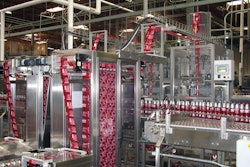
As a packaging professional with more than 40 years of experience in package design and development, all of the large consumer product companies I have been associated with have faced many design challenges in making sure each package had the best appearance possible at retail, yet also conveyed a quality product to consumers.
Each of these companies has had an internal staff to manage the package design process for different product categories. These packaging projects have ranged from complete redesigns to improving the consumer experience to cost savings to graphic changes that enhanced shelf impact. The majority of the time, package development staffs I have been associated with have relied heavily on external vendors or suppliers to help with the redesign.
The many decisions involved in a successful packaging project raise an important question about vendors. If you’re on the design team at a consumer products company, is it smarter to use external companies, or should your internal staff attempt to go it alone? Specific circumstances will dictate which approach is best for your company, but in general, I have found there are many good reasons to tap into the expertise of packaging vendors.
In my experience, the vendors’ strengths have made the decision to use them as a resource much easier. Their strengths have included design staffs focused on one type of package, knowledge of materials far exceeding internal staff knowledge, a focus on one industry, much larger design staffs than what was available internally at my companies, and finally, expertise. These vendors either had formal training in the industries in which they worked or developed on-the-job expertise over time. They could refer to other designs they had developed or to designs that others in their companies had created for other customers in the same or different product categories.
They offered one other important advantage: far more time to dedicate to new package designs. The design improvements could include new barrier materials to extend the product shelf life or new ink systems that did not fade in sunlight but also allowed for outdoor storage. Importantly, these vendors’ successes quite often depended on the new technologies and designs they were able to commercialize.
On the other side of the equation, vendors can potentially create undesirable situations or weaknesses in the development process, from questions about design ownership and overall higher cost-to-market to longer timelines to having a focus on only one industry. Here are my thoughts and experiences in each of these areas.
• If a vendor develops a package design, you want to define who owns that design very early in the process, and in what product categories will they have ownership. Those details need to be agreed upon before any serious work is begun.
Design agencies receive large fees to create designs for new product launches or to update the current design. Normally, they do not want to maintain ownership of the designs because their fees cover their time and expertise. On the other hand, other vendors often want ownership. It helps them keep a consumer product company as a customer, and they also can offer that design or technology to other companies in different product categories.
• The overall development cost to get a design or technology into the marketplace could be higher using vendors. They have to cover the costs of their internal staffs or “experts,” and that in turn could increase package costs. In most cases, higher costs can be justified by faster time-to-market and the fact that vendors have knowledge and expertise that their product manufacturer customers lack internally.
• If your company’s internal design staff is capable of getting the upfront design work completed and consumer-tested on its own, that could improve speed-to-market, because your company will not be competing with other companies that are using the same vendor. After the design is developed and tested, it can be presented to vendors for a formal quote and timeline. If they know they might have to compete for your business, your costs and timeline should improve.
• Finally, know whether your vendors have expertise in only one area. That could limit the designs and technologies they can offer as solutions for your package requirements.
Having spent my career working for package “user” companies with internal design staffs, I have found that the strengths have outweighed the weaknesses of using vendors. Using their resources has led to many successful package development launches over the years.
ABOUT THE AUTHOR: George Hill is Senior Research Principal-Packaging R&D at The Scotts Company.
For information about IoPP, visit www.iopp.org.
























